Top Ten Tips for Buying a Pump
Buying the best motor pump for your home, field, shop, commercial establishment or virtually any other purpose, can be a challenge. There are multiple brands, many manufacturers, several types of pumps, and an array of promises that come along with each product. There are also multiple technical aspects that you need to keep in mind before making a purchase decision. Keeping a few important tips in mind can help you make the right decision.
01. What is the type of pump you need?
One of the simplest ways to start your decision-making process here is to know what the water source is. Broadly speaking the water sources could be:
|
Type of water source |
Types of pumps |
Info you need to have
|
|
Sump / Well
|
Surface |
Suction head, delivery head, number of fittings, pipe size, water requirement, sanctioned horsepower (HP), single phase/ 3 phase |
|
Submersible |
Delivery head, number of fittings, pipe size, water requirement, sanctioned horsepower (HP), single phase/ 3 phase |
|
|
Bore well |
|
Delivery head, number of fittings, pipe size, water requirement, sanctioned horsepower (HP), single phase/ 3 phase, type of discharge (open/sprinkler/drip) |
Here are a few images that will help illustrate a few of the terms used in the table:
Installing a borewell:
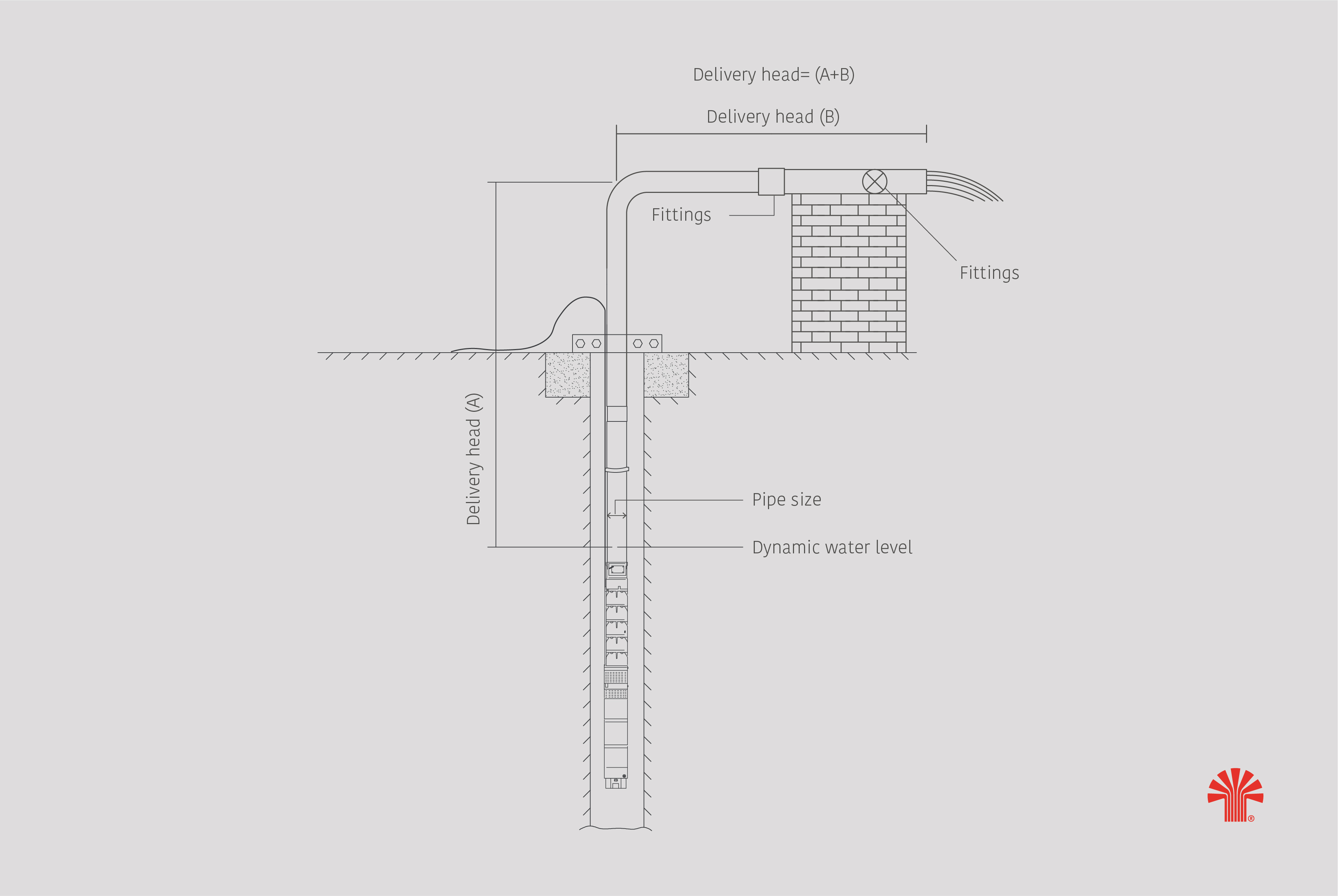
Installing a monoblock:
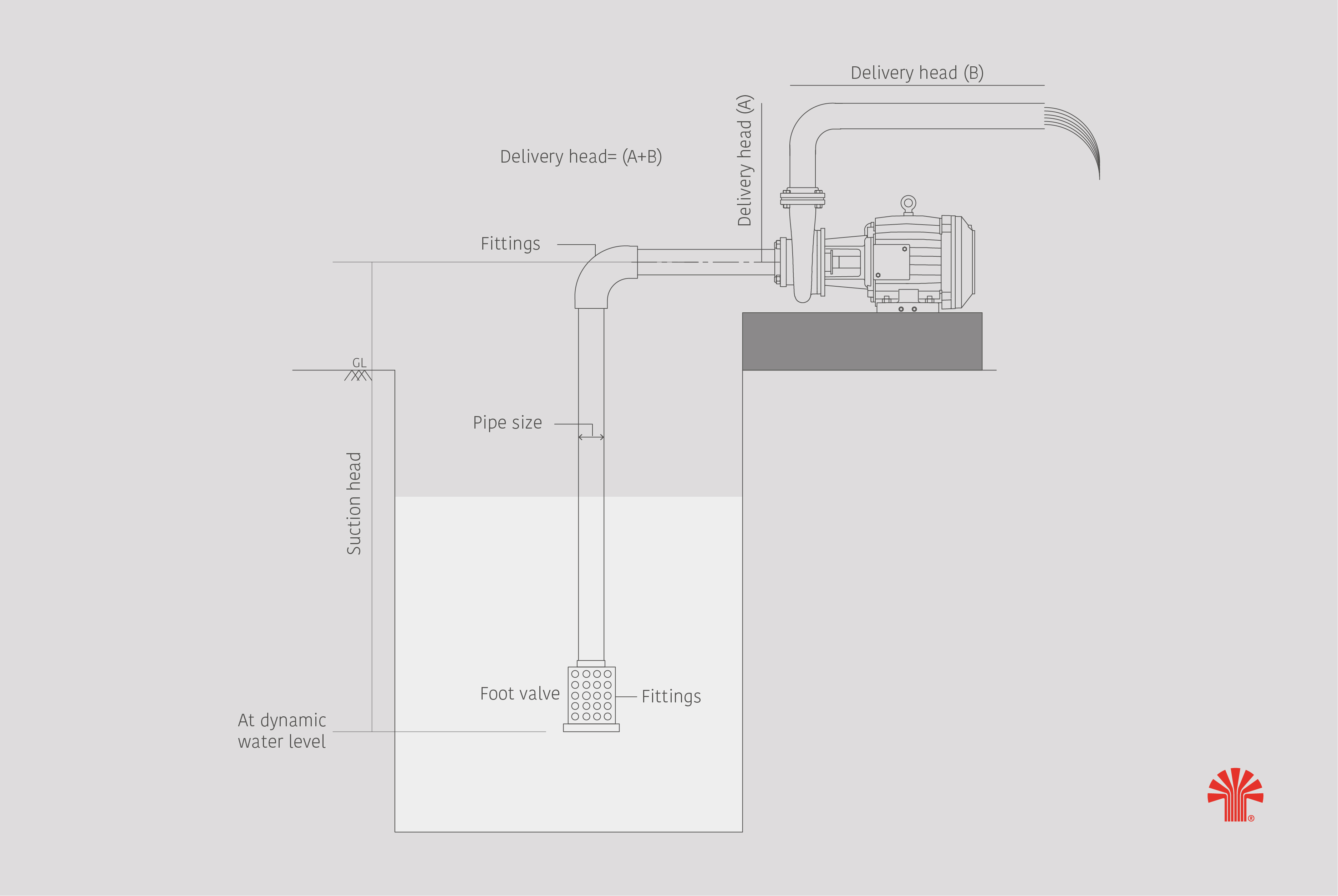
Installing an openwell submersible:
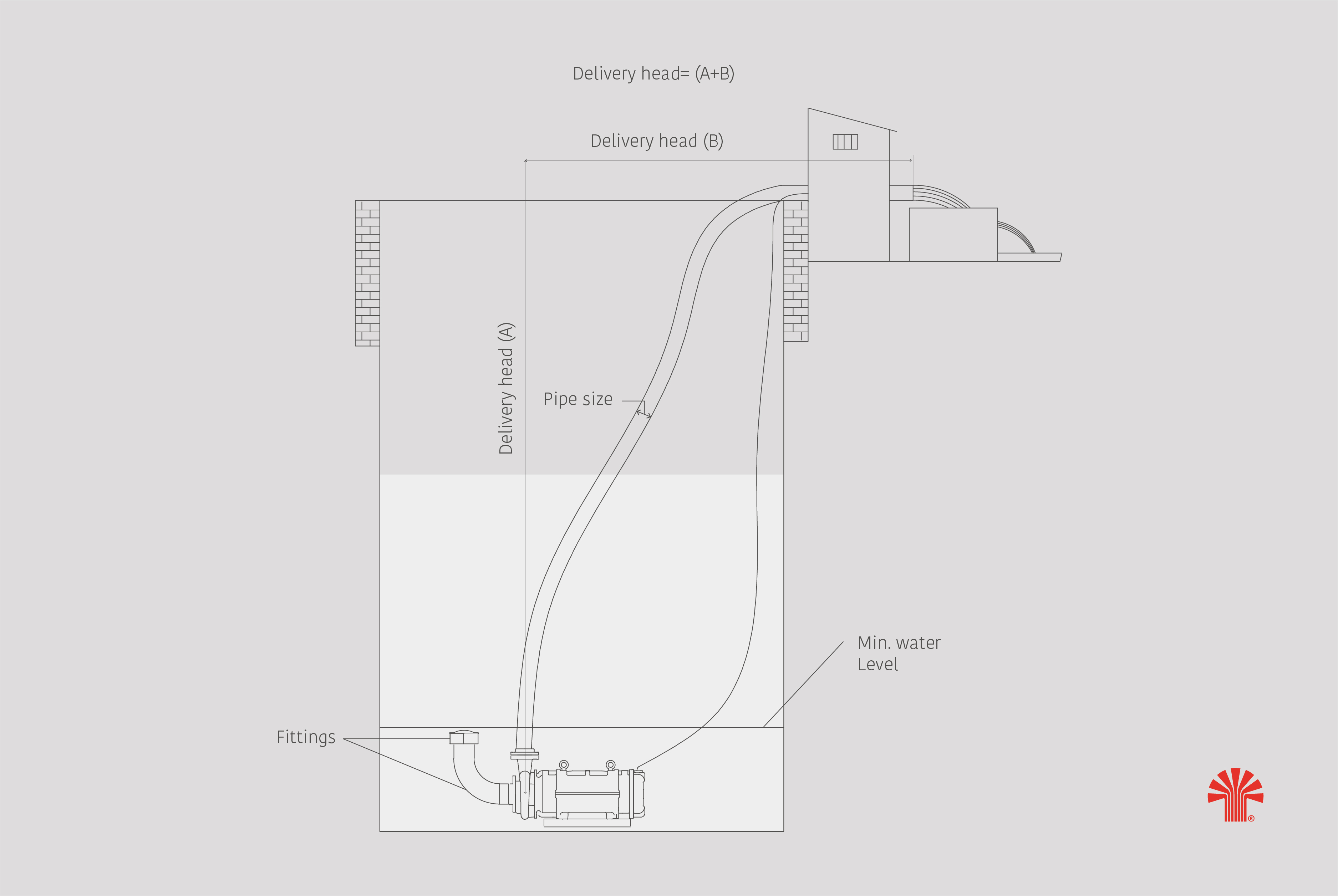
There are many types of pumps in the market and here are a few of the major ones:
(a) Borewell submersible pumps: - as the term denotes, submersible pumps are designed to be submerged in water. Water-proof construction is critical here. They are best used for domestic water supply, cattle farms, and agricultural irrigation systems too. You should not look for a borewell submersible pump if the borewell is made of soft sand or mud that can collapse, or if a government authority has banned the use of the same. Alternatives to borewell submersible in these cases are centrifugal jet monoblocks, and compressors.
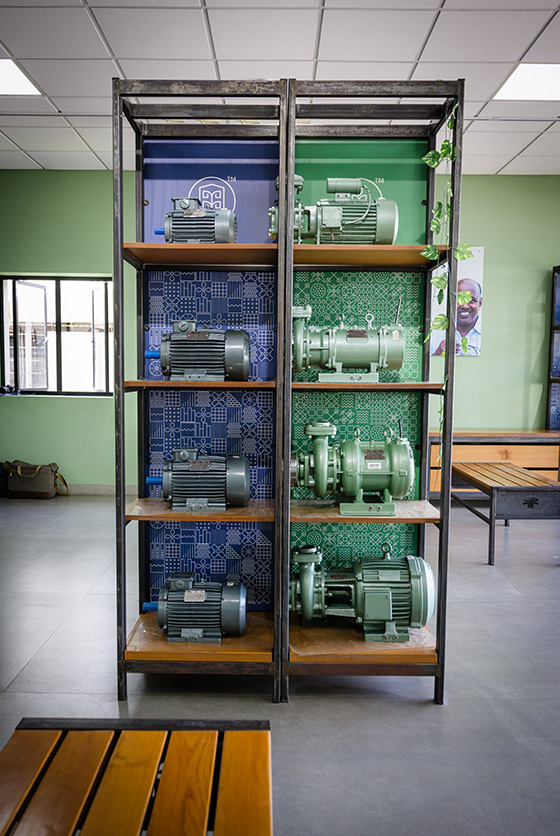
(b) Openwell submersible pumps: - This type of pump is an upgraded version of the monoblock and is best suited for wells where there are fluctuating water levels. This type of pump eliminates the need to shift a monoblock pump through different heights to support proper suction performance. You can read more about buying submersible pumps here.
(c) Monoblocks:- known for delivering the best possible operating efficiency, a monoblock pump has the motor and the pump occupying space on a common shaft. They are also compact when compared to most other pump sets.
(d) Borewell compressor pump: - helps in locations where the yield of water is low, and there are loose soil conditions. Here, compressed air gets pumped down the well and gets mixed with water. Since this mixture has a lower density than the surrounding water column, it rises to the top and allows water to flow out. Depending on the capacity of the pump, it can help pump out water from depths of 500 feet too, such as Taro borewell compressor pumps.
(e) Jet pumps: - the name says it all! A jet pump forces the water out through a nozzle at high pressure. Normally, these pumps work in a 2-pipe combination. One pipe injects water into the well and the other brings out the water from the well in a high-speed stream.
02. Pump capacity & pressure rating

A pump transfers fluid from one location to another. These two locations can be separated by elevation, distance, and even pressure of water. Before installing a pump set, you should have information on all these aspects:
-
Where is the source of the water, and the destination of the same?
-
Height of the source, and height of the destination
-
Soil conditions of the field in source, and destination
The term ‘head’ denotes the height above the suction point that a pump set can lift water. This is denoted in feet or metres. There is also the flow rate which describes the amount of water that travels through the pump within a given time. This is typically denoted in litres per minute.
The discharge pressure is also a critical part of the pump’s performance. Discharge stands for the distance that a pump pushes the liquid through. Factors such as size and power of the pump play a huge role in maintaining the right discharge levels.
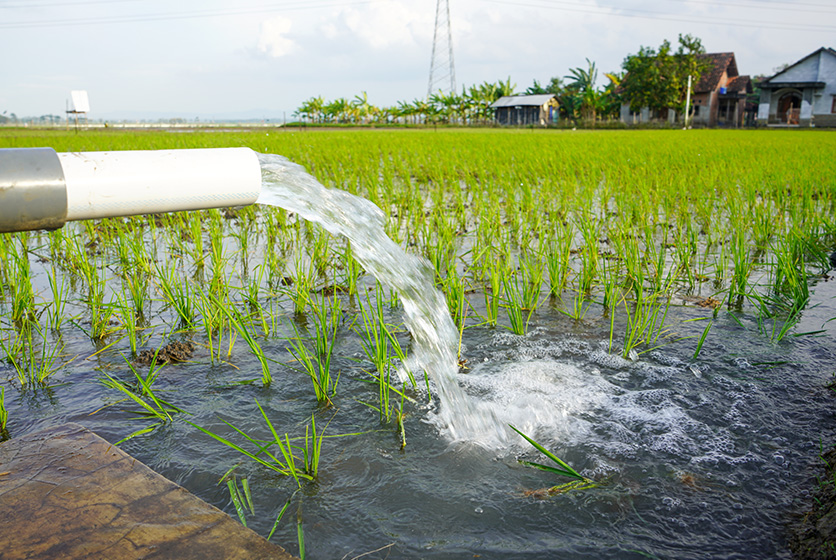
Here is a basic guide to domestic pump choices:
|
Mounting |
Type |
Suction |
Floors |
HP |
|
Surface |
Self-priming |
12 feet |
1-2 |
0.5 HP |
|
Self-priming |
12 feet |
3-6 |
1 HP |
|
|
Non-self-priming |
12 feet |
1-2 |
0.5 HP |
|
|
Non-self-priming |
12 feet |
3-4 |
1 HP |
|
|
Immersed in sump |
Horizontal |
|
2 |
0.5 HP |
|
Horizontal |
|
3-4 |
1 HP |
|
|
Vertical |
|
10-11 |
1 HP |
Self-priming pumps do not need water to be poured on them during regular operations. Of course, the above table is just an uncomplicated guide for domestic pumps. There are many other factors in play when it comes to commercial/ industrial, and agricultural pumps. And it would help a lot for you to choose the right manufacturer.
03. Check out the manufacturer
Thanks to the internet, it is easy enough to do online research on the pump manufacturers in your location. Of course, it is always a clever idea to ask your community too. People in your vicinity can give you adequate information on pump manufacturers in the region.
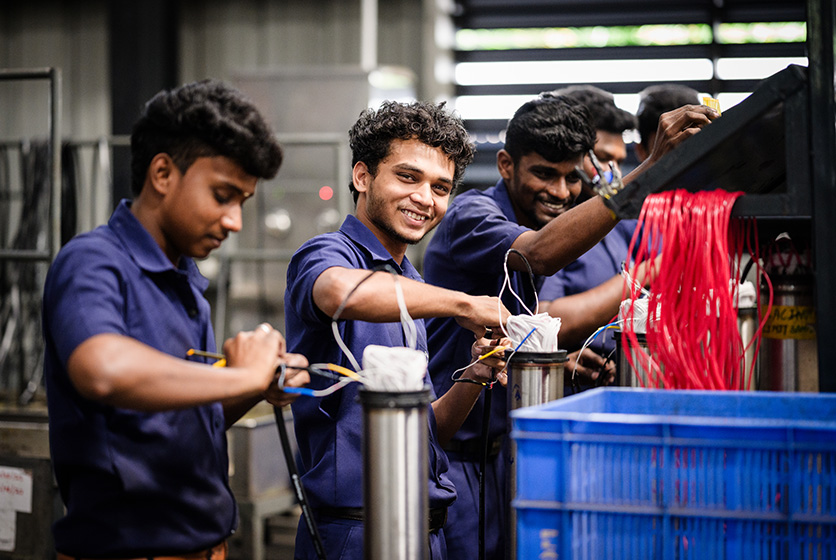
Here are a few things to keep in mind when researching the manufacturer:
-
What is their brand reputation?
-
How solid is their reputation for after-sales service? For instance, do they have service centres near you - because this impacts the speed of service. The sooner the better because a faulty pump impacts your everyday life.
-
Spares availability – is it a manufacturer who runs out of spares very quickly? Because a pump can last at least a decade; with proper maintenance, and you need to know that spares and accessories are available for the same duration as well.
-
How long have they been in business? Longevity is good!
-
What is their product range? A wide range of products and pump applications means more choice for your specific needs.
-
Do they conduct interactive meets & sessions that promote better awareness for customers, technicians, and their dealers? Such interactions speak to the company’s intent to provide customers, and technicians with product knowledge, training, and support.
-
What is the infrastructure they have? Where do they do their manufacturing?
-
What industry standards and norms do they follow? Do their products and their factories have certifications like ISI, ISO, BEE Star rating and so on?
-
How many years warranty do they offer? And how easy is the process to find out about warranty claim? For instance, Texmo Industries offers a 2-year warranty which is unmatched in the industry. We also have a comprehensive 5 Ticks programme when it comes to our products.
-
Does the company have a training programme for technicians? This guarantees standardised, knowledgeable, and capable service.
-
Does the manufacturer stay current and upgrade products or innovate based on customer feedback?
These are just a few of the aspects to delve into when choosing the right manufacturer for your needs. A company should also have a pan-India presence when it comes outlets, stores and dealerships so you can find a product in your location.
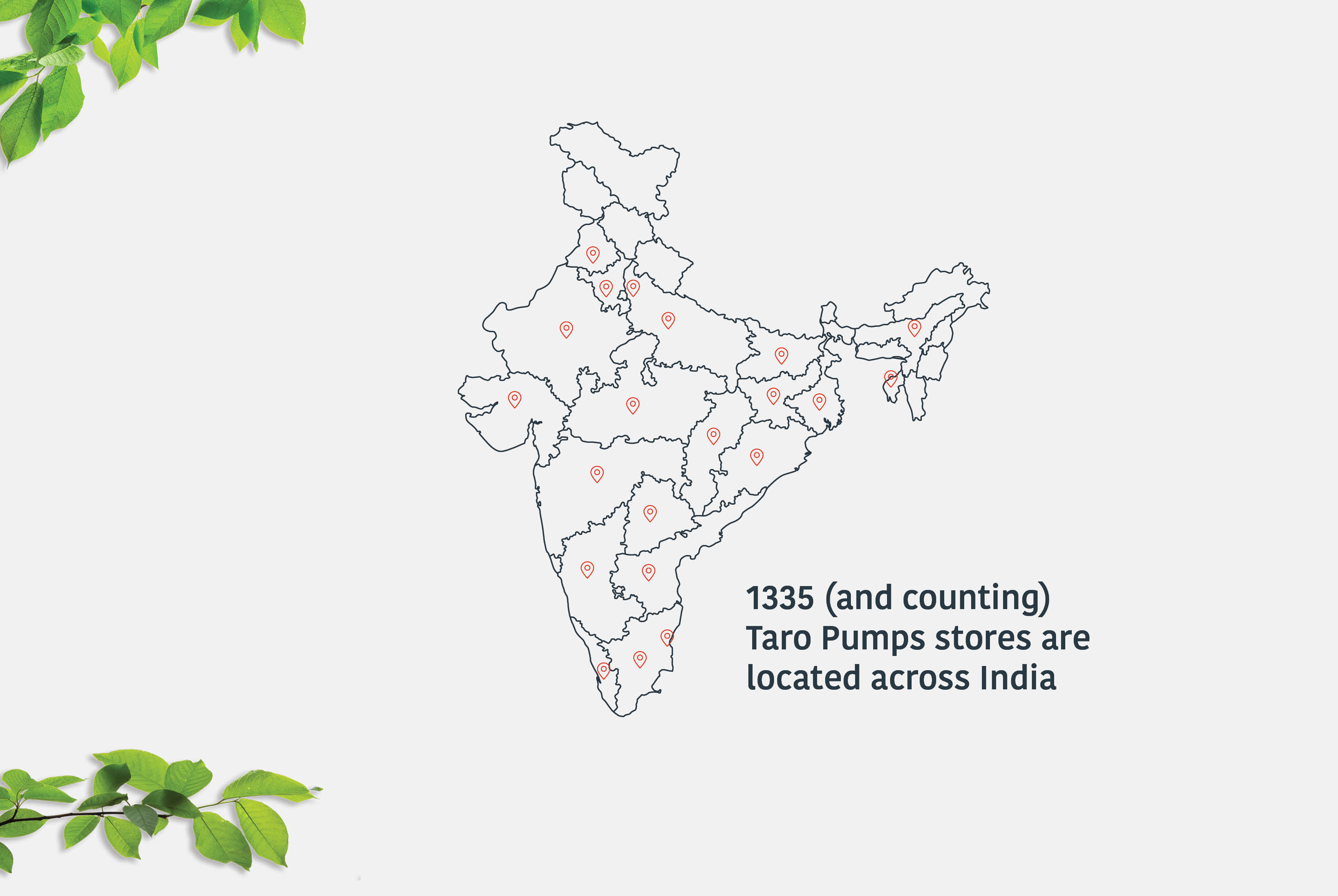
04. Dealer network
Visiting the website of a pump manufacturer should also give you the ability to find a dealer near you. Most manufacturers have dealers who stock pumps of varied brands. This might be convenient for you to compare a pump across multiple brands but also causes a bit of confusion when it comes to choice! So, here’s a tip – ask the dealer what kind of support they get from the company when it comes to doing business!
A good pump manufacturer will support their dealers with:
-
Brand guidelines
-
Frequent meets and training programmes
-
Social media promotion
-
Branded stores layout – all stores should reflect the brand look & feel
-
Digital systems that aid in easy ordering
-
Genuine spares
-
Trained technicians
-
A network of authorised service centres
Also, when you visit a dealership, they should offer you an inviting space where you can interact with pumps and motors. The products should not be lying in some corner of the shop preventing you from looking at it closely. The personnel should also be able to give you all possible information on pumps. And this information can be given to you with the help of a digital hub and by the person concerned.

05. Customer service & technician network
A network of authorised service centres supports a dealer network when it comes to pumps. Customer service is certainly one of the most crucial aspects of your pump-buying decision. And when it comes to after-sales support, few of the things you can confirm are:
-
Time taken – for essential equipment like pumps there needs to be a very quick turnaround when it comes to service. For instance, Texmo Industries offers a 48-hour turnaround time.
-
Technician network – all our dealers have trained technicians on hand. This helps when you raise a product complaint and expect a quick site visit by a qualified person.
-
Correct & proper installation – customer service starts with the right installation of your pump. A company-trained technician will not follow incorrect steps that will lead to product failure.
-
Accessibility – customer support team should be accessible in multiple ways – phone, chat, social media, website interface, email, etc.
06. Brand
A company is known also by its brand. For instance, Texmo Industries manufactures its pumps under the brand name ‘Taro Pumps’. This brand has been in the market for many years now and we have built up a social media presence that is growing by the day. A brand of pumps should convey the company’s thought process and its reliability. So, when you research a brand of pumps and motors, look for:
-
Longevity in the market
-
Recall and respectability of the brand
-
How much pride does a dealer have when they promote or sell a pump carrying a particular brand?
-
Does the brand have local presence – shops, installations, and so on?
-
Does the brand also lend itself to genuine spares and accessories?

07. Availability of spares and accessories
In the world of mobile phones, a model turns obsolete in less than a year, and the customer is forced to upgrade to a new model even though the old one is working fine. This cannot be the case in the world of motors and pumps. Purchasing a pump set is done by customers after careful deliberation, and budgeting. It is not something that can be replaced every year simply because spares and accessories are not available.
Therefore, when you look for your pump set and the right manufacturer, figure out if they have both – the availability of spares, and do they use only genuine accessories when it comes their pumps.
Here's a fact for you: Government norms dictate that a manufacturer should give at least seven years spares parts supply guarantee. And guess what Texmo Industries does? We more than double this number and offer you a 15-year spares guarantee. And one of the reasons we can do this is because of the high-quality materials used to make our products.

08. Materials of the pump
Advanced CNC machines, stringent manufacturing processes, and qualified workforce do their work even better when the pumps are made from high-quality materials. Choosing the best materials for making the pumps is one of the tips you should investigate when it comes to your purchase decisions. A pump that is made well is made to last. It will not give you performance issues and it will survive the toughest of field conditions too.
Using testing methods and analytics like Scanning Electron Microscopy (SEM), Energy Dispersive X-Ray Analysis (EDAX), and Transmission electron microscopy (TEM) to name a few, are important to ensure that only the best materials make it to the production line.
09. Price comparisons
Budgets are important when it comes to any purchase! It is no different when it comes to pumps and motors. We must confess that we face many questions from customers and mechanics in our meets about pumps which are priced lower, or pumps which are made locally. We also concede that these pumps may prove to be useful too.
In The Short Run.
Local-made pumps may be cheaper, but they are likely to prove costly in terms of energy usage, frequent breakdowns, repair costs, and the sheer mental stress one must undergo with a non-branded product, probably not covered by a significant warranty either. A more useful way to compare prices would be to see what gives you most value for your hard-earned money.

Good manufacturers will always have options based on your budget. For instance, Texmo Industries offers three ranges of pumps: Power, Prime, and Premium. These categories are useful when you have a specific price point when it comes to pumps.
10. Customer reviews
Every product is supported by an enormous number of reviews. And these reviews drive purchase decisions, for sure. It is useful to look for reviews and feedback on multiple platforms. Starting with the social media accounts of the manufacturer is a promising idea. Because here you can also see if genuine customers have left feedback, and how the manufacturer has handled the same, especially if it is negative feedback.

Regardless of the source of feedback, please ensure that you delve a bit (maybe even a bit more!) into details because as you know, negative comments can be left by competitors, irate employees, and fake reviewers too!
And finally, here are two Bonus Tips:
Bonus Tip 1: Keep the original bill safe. In fact, you can even take a photo of the same and store it in a digital locker or perhaps send it to your own self digitally.
Bonus Tip 2: Take a photo of the plaque of the product. This metal plaque has all the identification details necessary when you want to find out more about the product or ask for service support.
Indeed, there are many more technical details involved when you are buying a pump. Considering that it is a decision that will affect long-term use, investment of money, and even after-sales support, it is worthwhile to do as much research as possible beforehand. Of course, you can always find a Taro store or dealer close to you too. We have a digital selection process that can help with most of the information you need, and a well-trained team that can help you.

In conclusion, buying a pump set requires careful consideration of the pump's type, capacity, head pressure, motor power, energy efficiency, construction, warranty, and price. We hope that by following the above guide, you can make an informed decision and choose a pump that meets your needs and budget.



